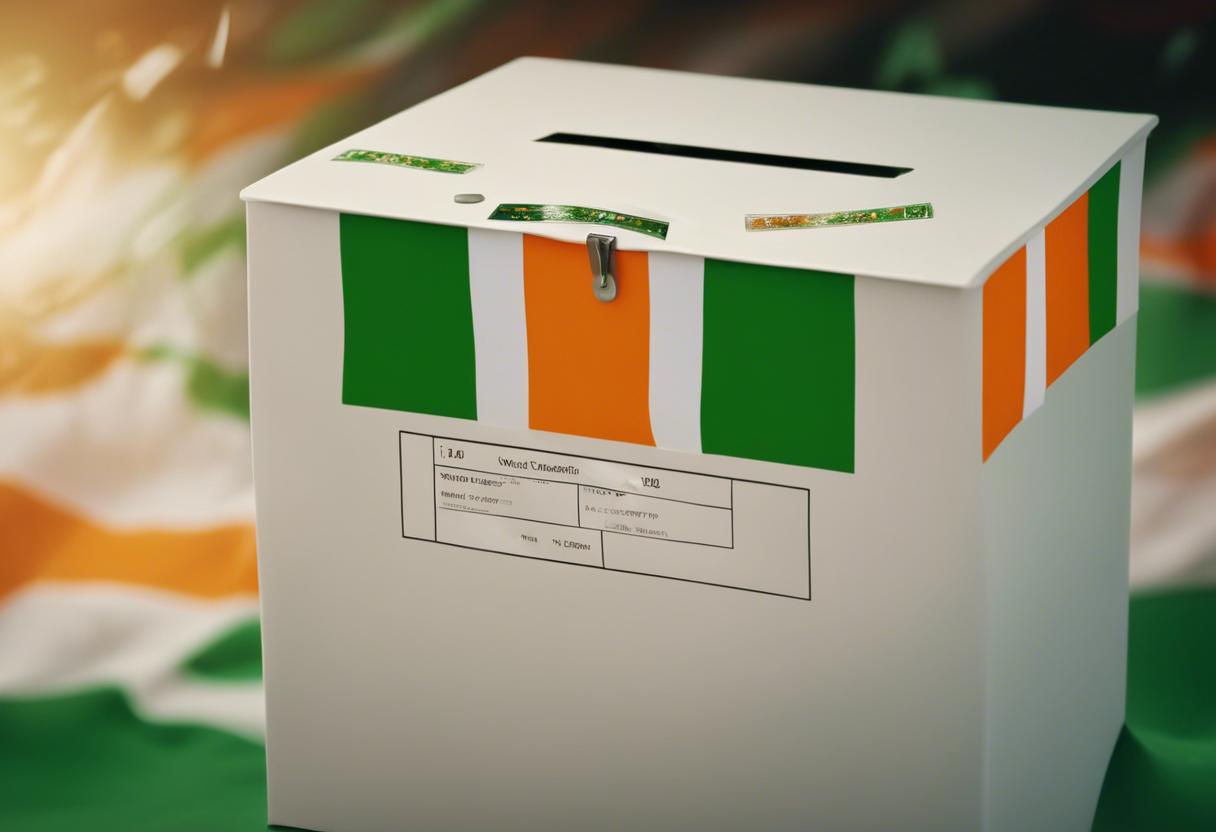With unfortunate timing, Sinn Féin consistently struggles to align optimally with the voting populace. The party saw a significant dip in support following promising opinion polls on the eve of the 2019 European and local elections. The party lost a third of their local council seats and only managed one MEP’s return.
Analysis of this failure pointed towards three key areas: Mary Lou McDonald’s uncertain leadership, inefficient local-level organisation, and the concurrent government’s impressive performance in managing Brexit.
McDonald shouldered the blame for the disappointing results, stating that the ultimate responsibility was hers. The party was left reeling from the experience, and in the subsequent general election of the next year, they underplayed their hand by understaffing the ballot, missing a golden opportunity to ride a significant wave of support.
Despite achieving the highest percentage of first-choice votes (24.5 per cent), thus breaking the long-standing Civil War political monopoly, Sinn Féin still returned fewer seats than Fianna Fáil. In several constituencies, their primary votes would’ve been sufficient to facilitate two seats if they’d nominated two candidates.
Despite miscalculating their electoral strategy, Sinn Féin were encouraged by the reality of being the most significant party within the State, back in control. The dismal 2019 results were disregarded as a one-off blunder and scrutiny of McDonald’s leadership lessened.
The path to power was further lit for Sinn Féin when competitors Fianna Fáil and Fine Gael formed an extensive coalition, thereby establishing Sinn Féin as the prime opposition. Historically, when formerly dominant parties group within one political spectrum, a rupture occurs in the established two-party system.
The political situation shifted significantly due to changes in housing policy, presenting the Sinn Féin party with a tactical advantage. This led to a surge in their popularity, with poll numbers increasing to 29% by the close of 2020, eight months into the reigning Government’s term. The succeeding year saw their support continue on an upward trajectory, reaching 35%, leaving Fine Gael and Fianna Fáil lagging behind with 20% each.
July 2022 brought a peak for the Sinn Féin party, boasting a 36% majority, placing them 16 points in the lead over Fine Gael. Discussions turned towards whether Sinn Féin could achieve enough support to govern on their own, or if strategic alliances would be necessary. A coalition with Fianna Fáil became a popular conversation point, even prompting conjecture on whether Fianna Fáil leader Micheál Martin would reconsider his previous resistance to such a partnership.
However, Sinn Féin’s trajectory towards governmental power hit turbulence when the issue of immigration came to the fore. This was as a result of the mass influx of over 100,000 Ukrainian refugees in the years 2022 and 2023, which had considerable repercussions on the political landscape, causing an escalation in violent unrest and a string of arson attacks.
Moreover, this shift in circumstance redirected the focus of anti-establishment politics. New action groups started to gather support, some borne from legitimate grievances and others stemming from the darker realms of society, many of whom were intent on causing disorder and propagating misleading information.
As seen in other international scenarios, this anti-immigration sentiment tends to negatively affect traditional left-wing support, while concurrently bolstering backing for perceived right-wing parties. In this case, Fine Gael’s popularity rose to 27%, outperforming Sinn Féin’s 20% and Fianna Fáil’s 19%. This constituted Fine Gael’s highest popularity since June 2021, and a low point for Sinn Féin since the 2020 General Election, marking their fourth continuous decline in the polls.
Much like various other nations in the West, Ireland is experiencing a rise in anti-immigration sentiment, leading Sinn Féin’s moderate view on the matter to conflict with a sizable part of its conventional support base. Following a disappointing performance in local and European elections in June—which saw the party overstretching its candidate pool—it altered its immigration stance, vowing to eliminate the State’s ‘two-tier system’ where Ukrainians reap more favourable conditions than asylum seekers from different nations.
Sinn Féin’s revised policy platform now insists that a review of local services—covering health, housing, transport and education—should be finished prior to setting up any dwelling centres for asylum seekers within a community. This policy permits local inhabitants to contribute their thoughts on these propositions. Nevertheless, there was no substantial departure from the existing government’s immigration policies which have also been toughening amid demonstrations, leaving Sinn Féin in a remarkably similar position.
Shifting further towards the right to regain the support of traditional, working-class voters outraged by the government’s immigration policy could potentially alienate newer, younger middle-class electorate who perceive Sinn Féin as a solution to their housing problems. This leaves the party in a predicament regarding immigration, on the brink of an election anticipated to be their opportunity for a big breakthrough.

